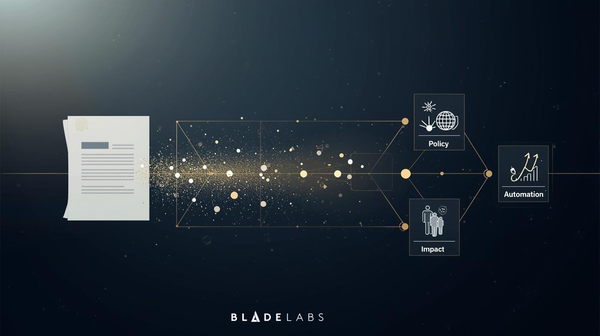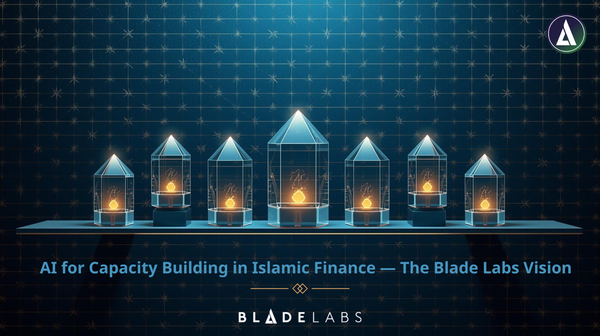Time, Trust, and Transparency: Timestamps in Islamic Finance Operations

Part 3 of the Digital Receipts on Blockchain series
In Islamic finance, timing isn't just about efficiency; it's about compliance. The sequence of events can determine whether a transaction is permissible or prohibited under Shariah law. A bank must own an asset before it can sell it. A payment must be allocated correctly at the precise moment it's received.
Traditional systems timestamp transactions, but these records are often imprecise, editable, or exist in isolated databases. When disputes arise or audits occur, reconstructing the exact sequence of events becomes challenging. Blockchain technology addresses this fundamental limitation.
The Ownership Sequence Problem
Consider a Murabaha transaction, one of the most common structures in Islamic banking. A bank purchases an asset from a supplier, then sells it to a customer at a disclosed markup.
But timing creates complications. What if the bank's payment clears at 10:47:23 AM, but the system doesn't record the ownership transfer until 10:52:18 AM? If the bank processes the sale to the customer at 10:49:11 AM, the transaction violates a fundamental Shariah principle: selling something before owning it.
Traditional banking systems record these events with timestamps from different systems. The procurement system logs the purchase. The payment system tracks the transfer. The customer system records the sale. Reconciling these systems to prove the correct sequence requires manual investigation.
Blockchain provides a different solution. Every event gets recorded on the same distributed ledger with a precise timestamp that cannot be altered. The system verifies that ownership was established before the sale executed.
The Regulatory Audit Trail
When regulators audit Islamic financial institutions, they need to verify Shariah compliance across thousands or millions of transactions. Did the bank consistently follow approved procedures? Were exceptions handled appropriately? Can the institution prove the sequence of events for specific transactions?
Traditional audit trails exist, but they're scattered across multiple systems with varying levels of detail and different timestamp precision. Reconstructing what happened on a specific day or during a specific hour, requires pulling data from multiple sources and hoping the timestamps align correctly.
Blockchain creates a single, comprehensive audit trail where every event exists on the same timeline. A regulator can query: "Show me all Murabaha transactions where the time between purchase and sale was less than one minute." The system can answer instantly because every timestamp is precise and every transaction is linked.
This doesn't just make audits easier, it makes continuous compliance monitoring possible. Rather than discovering problems during annual audits, institutions can identify timing anomalies as they occur.
Creating such comprehensive audit trails requires timestamp mechanisms that meet specific integrity requirements. To understand how blockchain achieves this, it's helpful to first examine the standards that have established what trustworthy timestamps should provide.
Understanding Global Timestamp Standards
As Islamic finance institutions evaluate blockchain solutions, understanding international timestamp standards provides important context.
RFC 3161: The Time-Stamp Protocol
This Internet Engineering Task Force standard defines how trusted Time-Stamping Authorities (TSAs) provide verifiable proof that data existed at a specific moment through digital signatures. RFC 3161 timestamps have legal standing in many jurisdictions because the TSA is a trusted third party and the timestamp comes from authoritative time sources.
For Shariah compliance disputes, such as proving a bank owned an asset before selling it - RFC 3161 timestamps provide legally admissible evidence.
ISO 8601: Universal Time Representation
ISO 8601 eliminates ambiguity in date and time representation. The format 2025-04-03T14:30:00Z means April 3, 2025, at 2:30 PM UTC - interpreted identically across all systems.
When Malaysian banks, Qatari regulators, and Bahraini Shariah boards review the same transaction, ISO 8601 ensures everyone interprets timestamps identically. For cross-border Islamic finance, this standardization prevents timing disputes.
RFC 3339: Internet Timestamp Profile
RFC 3339 extends ISO 8601 with fractional seconds: 2025-04-03T14:30:45.123456Z captures time to microseconds. This precision matters when multiple events occur within the same second and their sequence must be provable, such as in Commodity Murabaha transactions involving rapid sequential sales.
Consensus-Verified Timestamps: The Hedera Approach
Most blockchain platforms timestamp entire blocks of transactions. If Block 1000 contains 500 transactions, all 500 share the same timestamp, even though they may have arrived at different times. This works for many use cases, but creates challenges for Islamic finance where precise sequencing matters.
Hedera Hashgraph takes a different approach that aligns with the integrity principles of RFC 3161 while operating in a distributed environment: every transaction receives its own consensus timestamp.
Here's how it works: When a transaction enters the Hedera network, multiple nodes independently record when they received it. Through Hedera's consensus algorithm, these nodes collectively agree on the exact order and timing of transactions. The final timestamp for each transaction is the median of all node-reported receipt times.
This creates several important properties that parallel RFC 3161's guarantees:
Distributed trust instead of centralized TSA - Rather than relying on a single Time-Stamping Authority, Hedera's consensus mechanism distributes trust across multiple nodes. No single entity controls timestamps.
Cryptographic integrity - Like RFC 3161's digital signatures, Hedera's consensus timestamps are cryptographically bound to transactions. Any attempt to alter them breaks the integrity of the ledger.
Transaction-level granularity - Each transaction gets its own precise timestamp, allowing Islamic financial institutions to prove exact sequencing: the bank's purchase has timestamp T1, the subsequent sale has timestamp T2, and T1 < T2 is mathematically verifiable.
Fair ordering - Because timestamps are determined by consensus across multiple nodes, the ordering is inherently fair—no participant can manipulate transaction sequence.
Alignment with Standards Principles
While Hedera's approach differs technically from RFC 3161 (distributed consensus vs. centralized TSA), it achieves similar objectives:
- Timestamps that cannot be unilaterally modified
- Cryptographic proof of timing
- Verifiable by independent parties
- Suitable for regulatory and legal purposes
As the Digital Receipt System evolves, we're exploring how to further align with these established standards, potentially incorporating RFC 3161 timestamps for specific regulatory requirements while leveraging Hedera's consensus mechanism for operational efficiency.
For time representation, our system is designed to work with standard formats including ISO 8601, ensuring interoperability across the diverse jurisdictions where Islamic finance operates.
These technical capabilities translate directly into practical implementation. The Digital Receipt System being developed for the QFC proof of concept demonstrates how consensus-verified timestamps work in real Islamic finance operations.
How the Digital Receipt System Handles Timestamps
The Digital Receipt System implements precise timestamp recording for every transaction event. When a Murabaha transaction processes, each step receives its own distinct timestamp down to fractions of a second:
- Bank asset purchase initiation
- Ownership transfer confirmation
- Sale to customer
- Each subsequent payment
The key advantage: these timestamps exist on an immutable ledger. They cannot be altered retroactively. They provide a permanent record of when events actually occurred.
Payment Allocation Precision
In Diminishing Musharakah arrangements, Islamic lease-to-own financing, each payment contains two components: rent for using the bank's ownership share, and equity purchase that increases the customer's ownership percentage.
When a customer makes a payment at 8:47:33 AM, that specific moment determines the ownership percentage, which determines the payment split, which determines the new ownership percentage for the next payment.
Traditional systems process these calculations in batch operations, often at end of day. Customers paying at different times might all get processed with a timestamp of 11:59:59 PM. The loss of precision affects both record-keeping and calculation accuracy.
The Digital Receipt System enables real-time processing with precise timestamps. The payment at 8:47:33 AM gets recorded at 8:47:33 AM. The system calculates the ownership split based on that exact moment. Every subsequent calculation builds on this precisely documented history.
Beyond Compliance: Customer Confidence
Precise timestamps build customer trust. A customer viewing their Diminishing Musharakah financing history sees:
- Payment received: 3:47:22 PM on January 15
- Ownership updated: 23.4% → 26.1% at 3:47:23 PM
- Next payment due: February 15
The precision demonstrates accuracy. The visibility demonstrates honesty. The permanence demonstrates commitment to transparency.
This matters profoundly in Islamic finance, where trust in Shariah compliance is fundamental to customer relationships.
Looking Forward
As Islamic finance grows globally, the ability to prove compliance across jurisdictions becomes increasingly important. Precise, immutable timestamps provide a foundation for this proof.
The technology doesn't change Islamic finance principles. It provides a more reliable way to demonstrate that transactions occurred in the correct sequence, at appropriate times, with proper documentation.
As the Digital Receipt System evolves through the QFC proof of concept, alignment with international timestamp standards will remain an important consideration, ensuring timestamps that are precise, verifiable, immutable, and suitable for regulatory purposes.
In an industry where timing can determine whether a transaction is permissible or prohibited, reliability matters profoundly.



